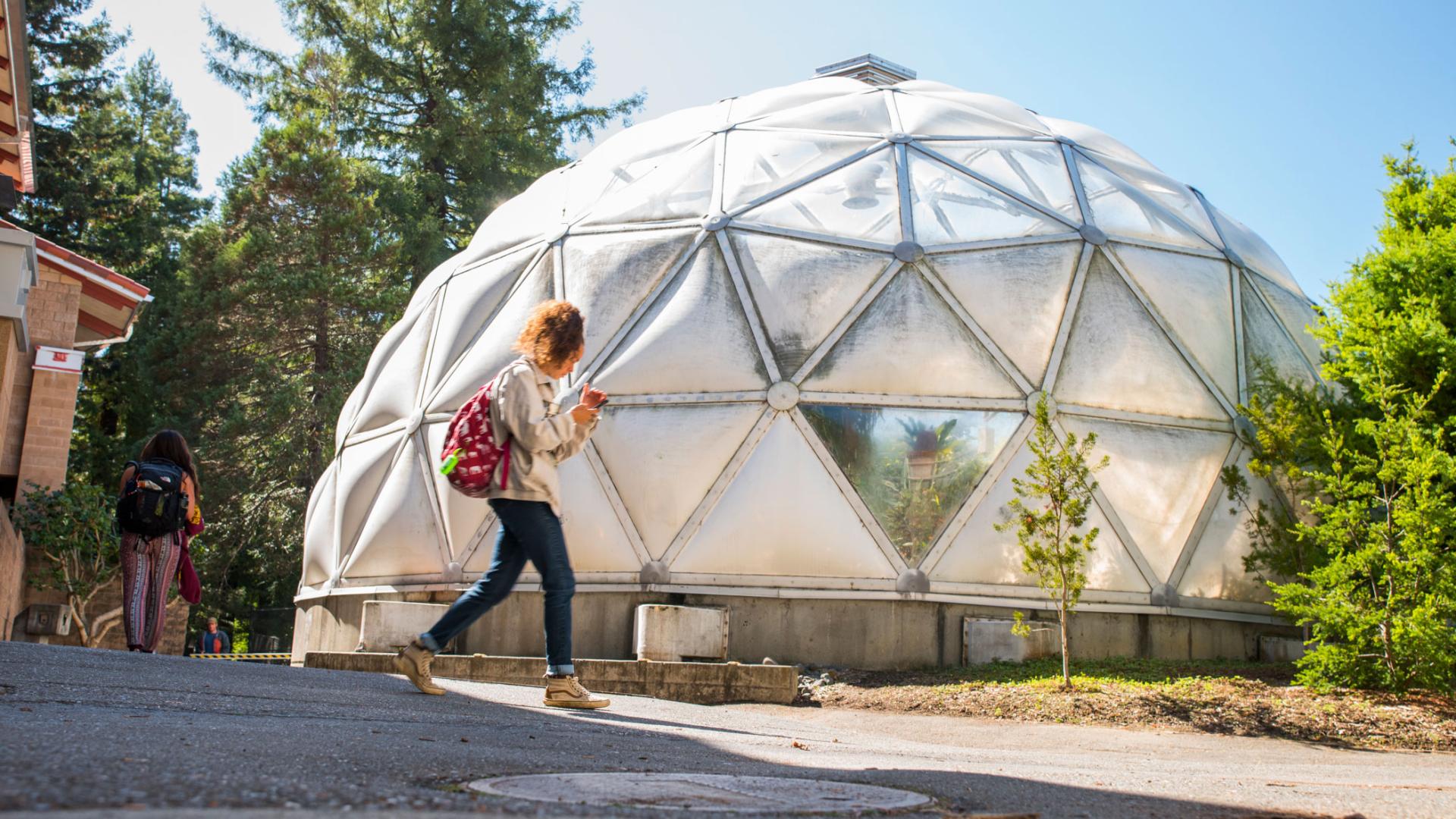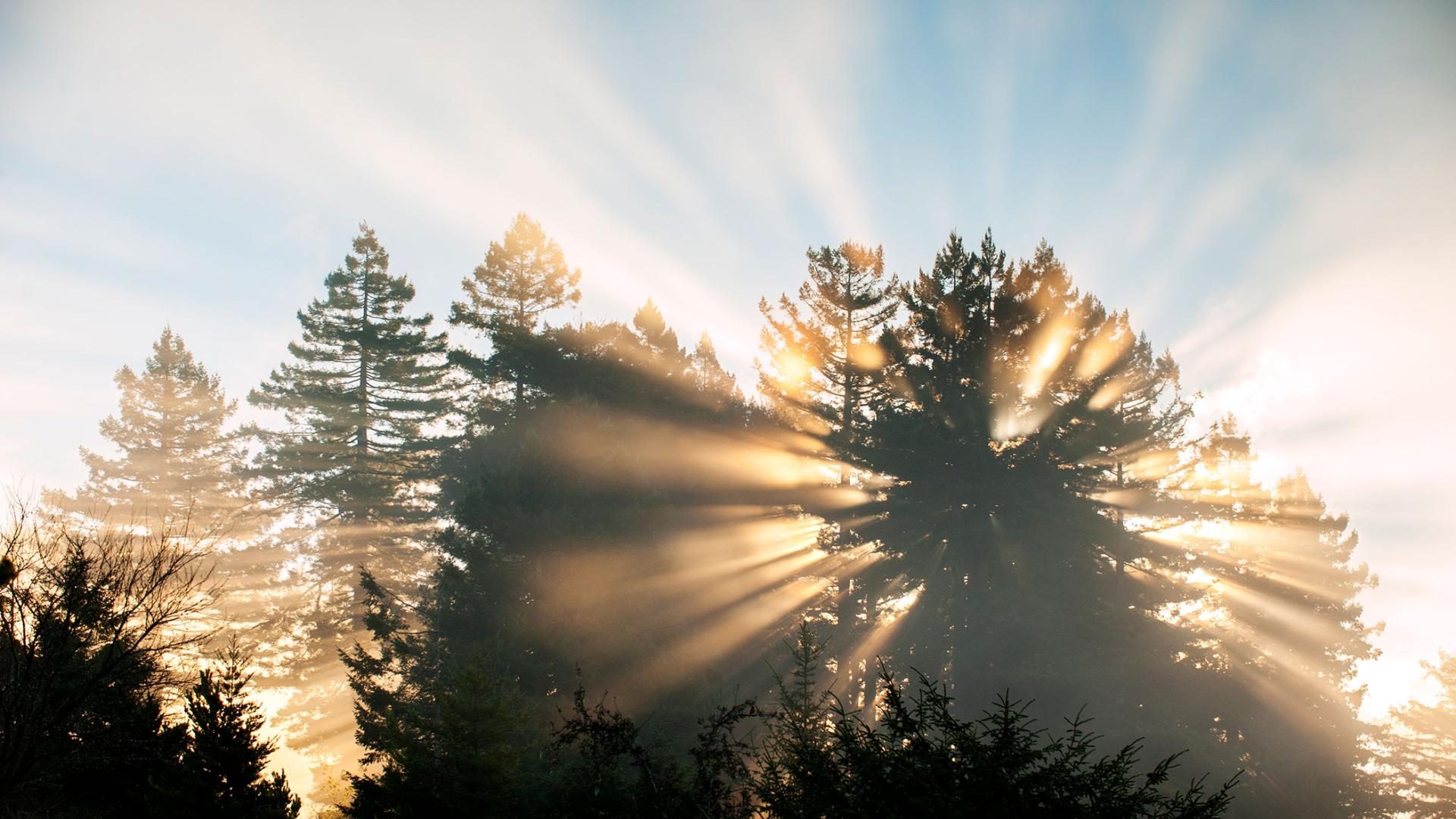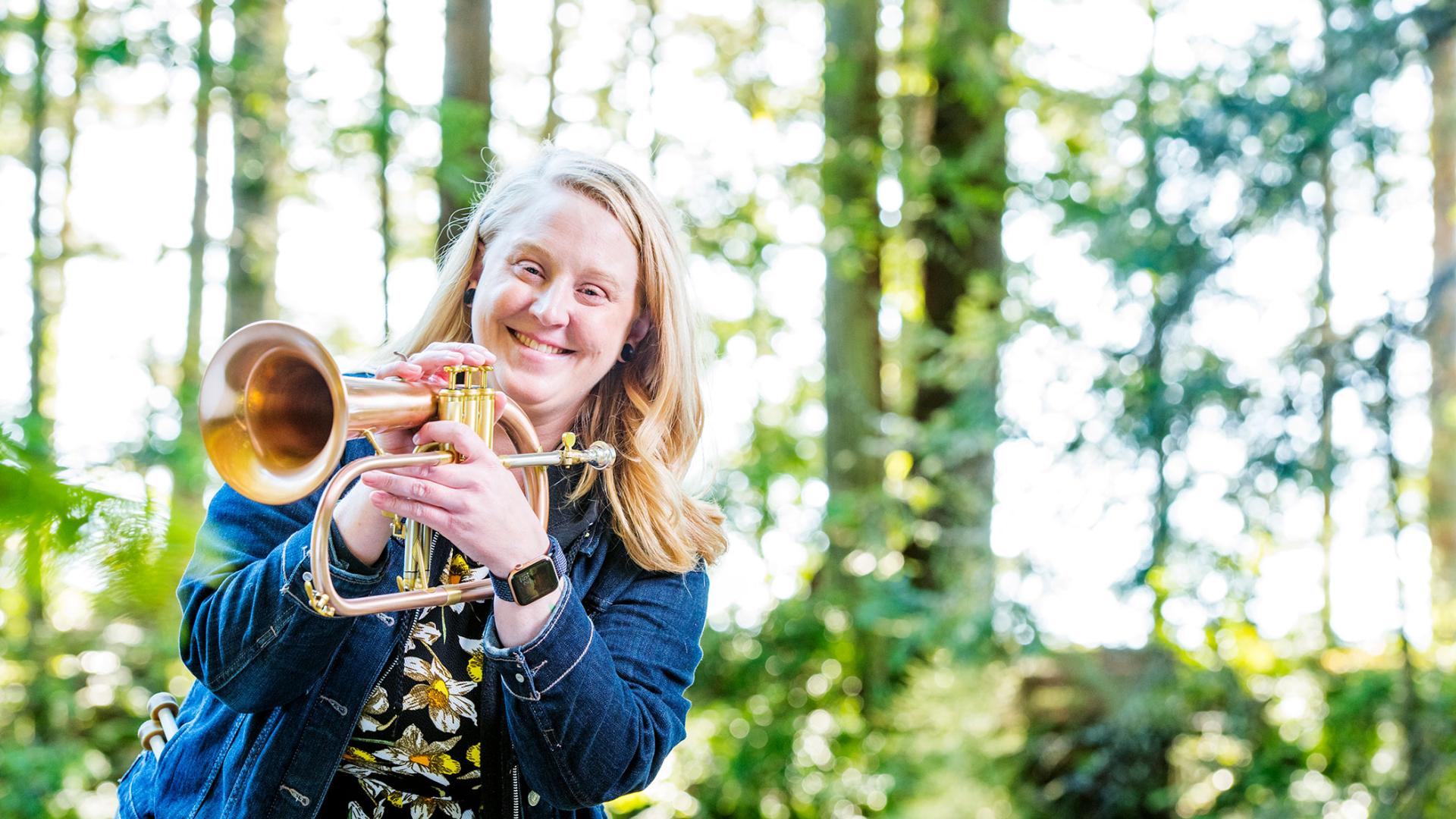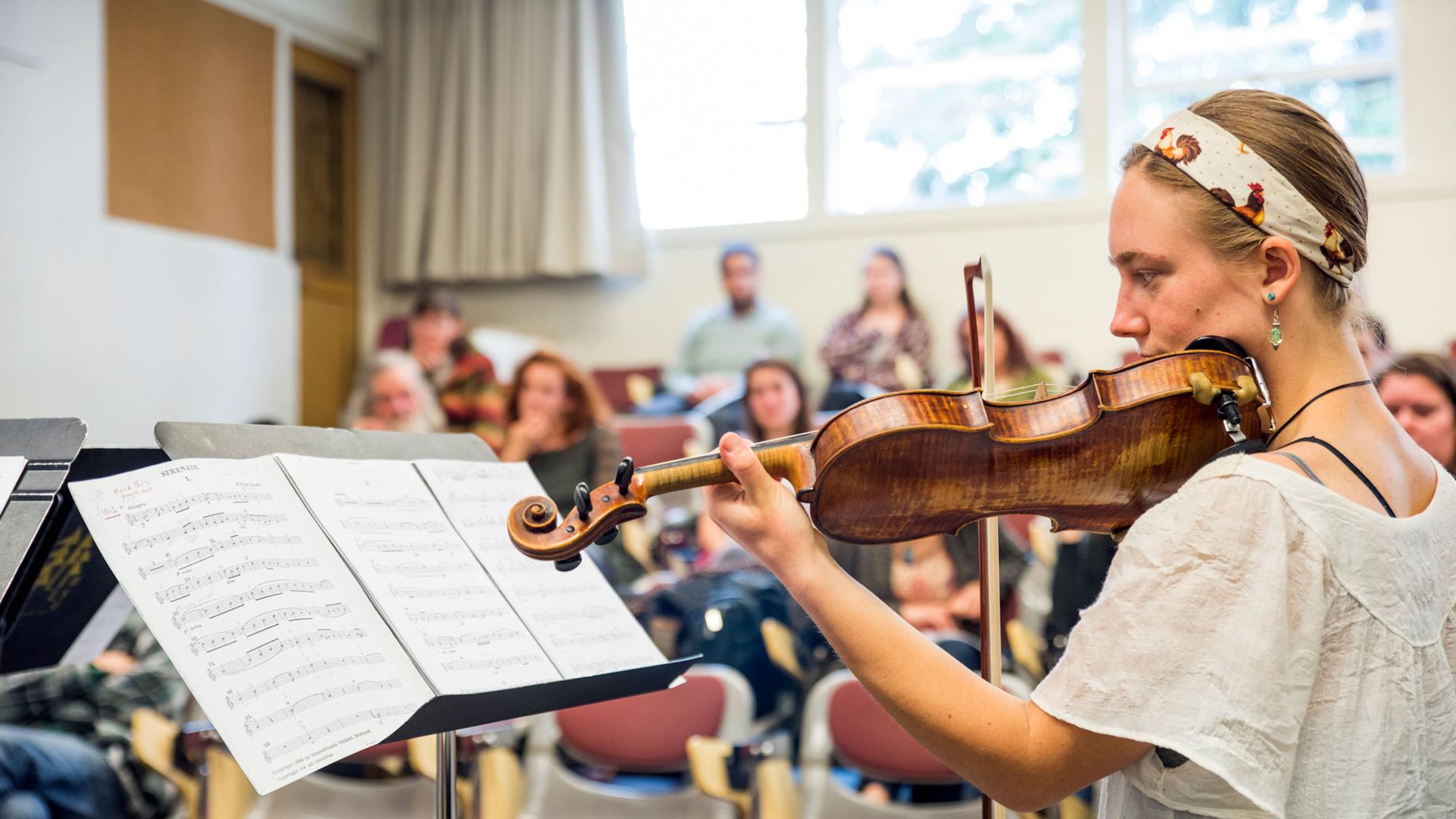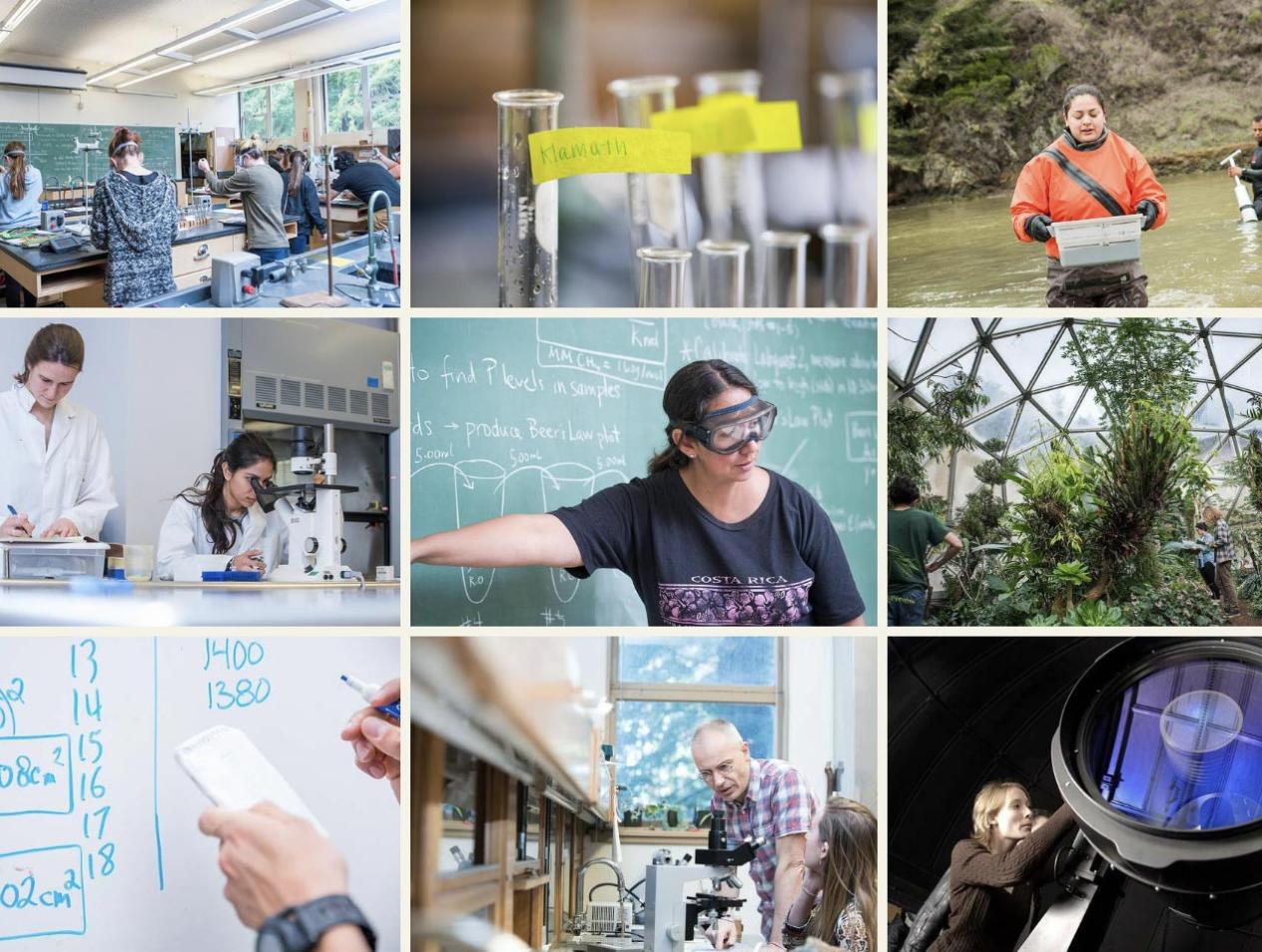Breadcrumb
Achievements
Find out what our students, faculty, and staff are being recognized for.
David Greene, Jeff Keane & Melanie McCavour
Forestry, Fire & Rangeland Management
David Greene and Jeff Kane of the Department of Forestry and Wildland Resources and Melanie McCavour of the Department of Environmental Science and Management have just been awarded a 10-year $800,000 grant from the Bureau of Land Management for a study of Baker Cypress. This tree species, restricted to a few populations in northern California and southern Oregon, has seeds retained in cones that will only open when burned and the continuation of fire exclusion is strongly contributing to its potential extinction. The purpose of the grant is to better understand the reproductive ecology of Baker Cypress, determine the feasibility of using prescribed fire and other treatments to inform the restoration and management of this species, and create the Environmental Impact Report that will underpin the management plan.
Mark Colwell, Dana Herman
Wildlife
Dana Herman (now working for the US Fish & Wildlife Service, Sacramento) and Mark Colwell published a paper on Snowy Plover lifetime reproductive success showing that a small proportion of the Humboldt County population contributed disproportionately to population growth. Plovers that bred on gravel substrates of the Eel River produced appreciably more young than those on sandy, ocean-fronting beaches. Their work was featured in the 28 Aug 2015 issue of the eWildlifer (wildlife.org), published by the The Wildlife Society.
Leabeth Mae Peterson
Environmental Resources Engineering
Leabeth Mae Peterson received the SWE Outstanding Collegiate Member award by the Society for Women Engineers, honoring collegiate members who have made an outstanding contribution to SWE, the engineering community, and their campus. She will be honored at a formal ceremony at WE15, the world's largest conference for women engineers, scheduled for Oct. 23, 2015 in Nashville, Tenn. The conference gathers over 8,000 women at all stages of their engineering careers.
Kathryn Hedges, Bruce O'Gara, Wayne Knight
Biological Sciences
Alumni Kathryn Hedges started her own business which focuses on laser-cutting jewelry, holiday decor, and souvenirs. She is using skills from Wayne Knight's graphic design classes and credits her thesis advisor, Bruce O'Gara, with instilling an entrepreneurial mindset. She is currently crowdfunding a Kiva Zip loan to get a studio, hire staff, and manage inventory. You can join her community of supporters at https://zip.kiva.org/loans/15574/i/qs5 or purchase her items at www.splendidcolors.com.
Erin Kelly
Forestry, Fire & Rangeland Management
Erin Kelly, Assistant Professor in the Forestry & Wildland Resources Department, and Jonathan Kusel, Executive Director of the Sierra Institute for Community and Environment, had their article on cooperative, cross-boundary management facilitates large-scale ecosystem restoration efforts published in _California Agriculture_, Volume 69, Number 1, January-March 2015. This article summarizes a case study for the Burney Gardens timber harvesting plan where a cooperative, cross-boundary meadow restoration project was undertaken by private & corporate landowners in Eastern Shasta County. The Burney Gardens property is currently under consideration for donation by the Pacific Forest and Watershed Lands Stewardship Council to the University as a teaching and research working laboratory of Northern Sierra Mixed Conifer forests with a large meadow complex.
Sara Hanna and Ken Fulgham
Forestry, Fire & Rangeland Management
Research by the Department of Forestry and Wildland Resources faculty was recently featured in a special issue of _California Agriculture_, a quarterly journal of peer-reviewed research from the University of California Division of Agriculture and Natural Resources. The issue titled, _Forestry: Managing for the Future_ highlights a wide range of forestry related research being conducted in California.
Sara Hanna and Ken Fulgham, Lecturer and Emeritus Professor respectively in the Forestry & Wildland Resources Department, had their article on Post-fire vegetation dynamics of a sagebrush steppe community change significantly over time published in California Agriculture, Volume 69, Number 1, January-March 2015. The article summarizes almost 30 years’ worth of data collected on two prescribed wildland fire sites in the Clear Lake Hills area of Modoc County. Significant findings regarding the post-fire plant community trajectories and changes over time have management implications for domestic livestock grazing, interstate mule deer herd winter range use, and the provision of suitable habitat for the threatened Sage Grouse (_Centrocercus urophasianus_).
Lori Dengler, Amanda Admire
Geology
Geology Professor Lori Dengler and Lecturer Amanda Admire presented talks at the 26th International Union of Geodesy and Geophysics in Prague, Czech Republic
Dr. Steven Steinberg, Adjunct Prof.
Environmental Science & Management
Dr. Steven Steinberg, Adjunct Professor of Geospatial Sciences, was honored by the California Geographic Information Association with the Advancement in Collaboration Award granted for outstanding application of GIS technology representing innovative, elegant, or creative techniques. The award was made at the 21st Annual CalGIS Conference in Sacramento on June 1. For more information: http://cgia.org/2015/06/2015-cgia-award-winners/.
Carsten Charlesworth and Kyle Herout
Biological Sciences
Two HSU students recently won first place in their category at the 40th Annual West Coast Biological Sciences Undergraduate Research Conference at Point Loma Nazarene University in San Diego. Carsten Charlesworth and Kyle Herout took first in the Cell Biology category for their presentation on the Paternal Effect Genes of C. Elegans. Their adviser on the project was Biological Sciences Professor Jakob Varkey.
Crystal Welch, Andrew Longman, Tyler Hanson and Robin Halloran
Forestry, Fire & Rangeland Management
Three Humboldt State University students passed the rigorous “Fundamentals of Soil Science” exam offered April 17, 2015 becoming Associate Professional Soil Scientists, according to test results from the Council of Soil Science Examiners. Crystal Welch, Andrew Longman and Tyler Hanson were among five individuals in California who attempted the exam this spring and were the only California examinees to pass the exam. Nationally, 61 individuals took the exam with a pass rate of 59% overall according to Michele Lovejoy, Program Manager for Professional Development of the Soil Science Society of America.
Crystal Welch graduated in Fall 2014 with a degree in Rangeland Resource Science (Wildland Soils option). After performing lab analysis of soils for Dirty Business Consulting in Arcata, Crystal starting working as a field scientist for the Great Basin Institute in Reno, Nevada. Andrew Longman graduated Spring 2014 with a degree in Rangeland Resource Science (Wildland Soils option) and will soon begin a position as Junior Specialist for Organic/Conventional Farming Project with Dr. Louise Jackson at U.C. Davis. Andy will help study the effects of water deficits on crop physiology, biology and pests. Tyler Hanson has completed his minor in Wildland Soil Science, and will graduate in Fall 2015 with a degree in Botany. Robin Halloran, another Wildland Soils option graduate (Spring 2015), passed the same exam November 21, 2014. In summary, 16 out of 23 HSU students who have attempted the exam have passed (70%) since 2011, well above the national average pass maximum of 63% for the same time period.
Those who pass the fundamentals exam will be eligible to take the Professional Practice exam after five years of professional experience, an additional step in becoming a Certified Professional Soil Scientist. Recent Soil Science Society of America (SSSA) discussions about program self-certification have included the fundamentals exam as one indicator of program quality. Given that the exam is multiple choice, it does not evaluate students’ field skills per se, but is an exam that is offered nationwide and is therefore ‘portable.’ Humboldt State University Wildland Soils students (an option under the Rangeland Resource Science major) spend more than 200 hours in field or laboratory learning experiences, honing hands-on skills and field judgment of soil properties, limitations, and capabilities.


